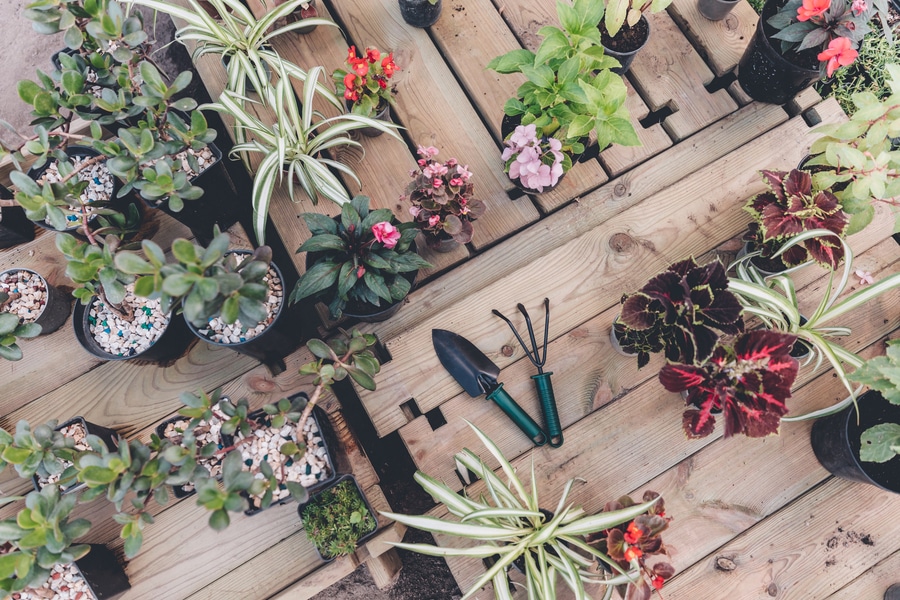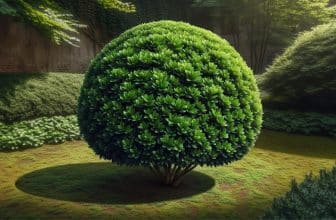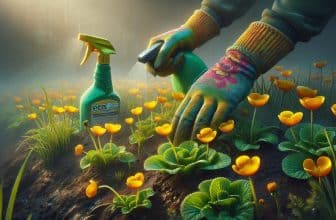
Imagine walking into a garden, your garden, bursting with a lively array of vibrant colours, fragrances and textures. Now, how do you get there? By making careful and informed choices when selecting your plants, of course!
Choosing the right plants is akin to picking out the perfect ensemble for an occasion. It’s not just about the aesthetics, it’s about the overall harmony and adaptability to the environment. It’s about making sure each piece, or in this case, each plant, complements the others and thrives in its given setting.
When it comes to your garden, a myriad of factors can influence which plants will truly flourish and transform your space. Soil composition, sunlight, shade, wildlife, and other factors must be taken into account. However, no matter the garden, there are always a wide range of plants you can use to liven it up.
Understanding Your Garden
Before you can transform your garden into a green oasis, it’s important to understand the space. The size, shape, and type of your garden will greatly influence your plant selection.
Firstly, consider the overall size of your garden. Smaller spaces might benefit from compact plants or vertical gardening techniques, while larger gardens can accommodate expansive plants or a variety of garden types. And remember, the shape of your garden can also dictate the positioning of your plants.
Your garden type is another key factor. The “type” is just a basic classification of standard garden layouts, patterns, and colours that serve as a guideline for designing a garden. Here are a few common types, as well as some plants that go well with them:
English Cottage Garden
- Roses
- Delphiniums
- Lupines
Wildflower Garden
- Black-eyed Susans
- Coneflowers
- Goldenrod
Formal Garden
- Boxwood
- Topiaries
- Hydrangeas
Of course, there are many different garden types that can suit a wide variety of spaces. These types are good as a general guideline for selecting plants by colour and type, but this is only a general outline of how your garden will be laid out, and which plants you will be selecting for it. It’s a good idea to poke around and do your own research into different garden types to see if there’s one that stands out to you and inspires you.
Understanding The Plants

Plants add charm to gardens. They vary in lifespan: annuals live for one season, biennials for two, and perennials long-term. A mix of these can keep your garden appealing throughout the year.
Plant hardiness is also important, it’s how well a plant can handle your local weather. Hardiness zone maps assist in choosing plants based on temperature. Consider the plant size and growth rate too.
Think about a small sapling becoming a large tree — it might not fit in a small garden. Slow-growing plants can test your patience. Also, understand plant maintenance needs so that you can craft a garden that doesn’t occupy too much or too little of your time.
Some plants need less care, others need more. Make a garden that fits your lifestyle, considering how much time and effort you can give.
Selecting Plants Based On Garden Goals

Choosing the right plants for your garden is like matchmaking at its finest. It involves understanding the environmental conditions, the space available, and the aspect of your garden to match it with the perfect plant companions.
Environment plays a significant role in plant selection. The soil type, local climate, and the amount of sunlight your garden gets can dramatically influence which plants will thrive and which will wither.
- Soil Type: Sandy, clay, silt, peat, chalk, and loam are the different types of soil. Dig a little to discover what’s beneath your feet and select plants accordingly.
- Climate: Whether you’re in a humid coastal area or a dry inland region, your local climate will dictate the types of plants that can grow well in your garden.
- Sunlight: Some plants love basking in full sun, while others prefer the coolness of shade. Monitor the sunlight patterns in your garden and select plants that match those conditions.
Consider the space you have available. Whether you’ve got a sprawling lawn or a compact balcony, choose plants that will flourish within your space constraints.
Note: Remember to allow enough space for plants to grow. Overcrowding can result in competition for resources, leading to unhealthy plants.
Finally, the aspect of your garden – its direction, layout, and design – should dictate your plant choices. Think about how each plant will fit into the overall look and feel of your garden.
| Aspect | Suitable Plants |
|---|---|
| North-facing | Ferns, Hydrangeas, Rhododendrons |
| South-facing | Roses, Lavender, Sunflowers |
| East-facing | Camellias, Azaleas, Tulips |
| West-facing | Japanese Maple, Magnolia, Dogwood |
At the end of the day, your garden should be a reflection of you – your preferences, your efforts, and your love for nature’s gifts.
Shade, Soil, and Wildlife
Choosing the right plants for your garden involves considering several factors, one of which is shade. The amount and timing of shade can significantly influence the types of plants that will thrive in your garden. For example, some plants prefer full sun, while others can tolerate or even prefer partial to full shade.
Soil composition can also impact the success of your garden. Different plants require different soil types, and understanding your soil’s nutrient content, pH level, and texture can help you select plants that will flourish.
Lastly, local wildlife can influence your plant selection. Certain plants may attract specific wildlife, such as butterflies, bees, or birds, enhancing the biodiversity of your garden. Conversely, some plants may be particularly susceptible to damage from wildlife, like deer or rabbits, and may require extra protection or should be avoided.
Conclusion

Embarking on the gardening journey can be both exhilarating and fulfilling. We’ve explored the key factors that determine the right plants for your garden: understanding your garden’s conditions, identifying your gardening goals, and choosing plants that align with your lifestyle and preferences. Remember, the perfect garden is a reflection of your personality and the love you pour into it.
Now, it’s your turn to create a garden that brings you joy and serenity. Happy gardening!
Colin Macmillan is a seasoned entrepreneur and the CEO of Riverwood Landscape, a leading landscaping company based in Canada. He has been at the helm of the company since leaving high school, demonstrating his strong leadership skills and business acumen.
Colin’s expertise lies in various aspects of landscaping, including lawn care, interlocking, sod installation, and commercial maintenance. His hands-on approach and dedication to the craft have been instrumental in building Riverwood Landscape into a reputable brand.
One of his most notable achievements is the creation of a successful landscape franchise that services multiple locations. This accomplishment underscores his strategic thinking and ability to scale operations effectively.
Colin has also had the privilege of working with Guelph Hospital for landscaping and maintenance, a testament to the trust and reliability that his company has earned over the years.
His professional mission is to offer the best services and experiences for customers, a goal that he tirelessly pursues. Colin’s commitment to excellence and customer satisfaction continues to drive the growth and success of Riverwood Landscape.








